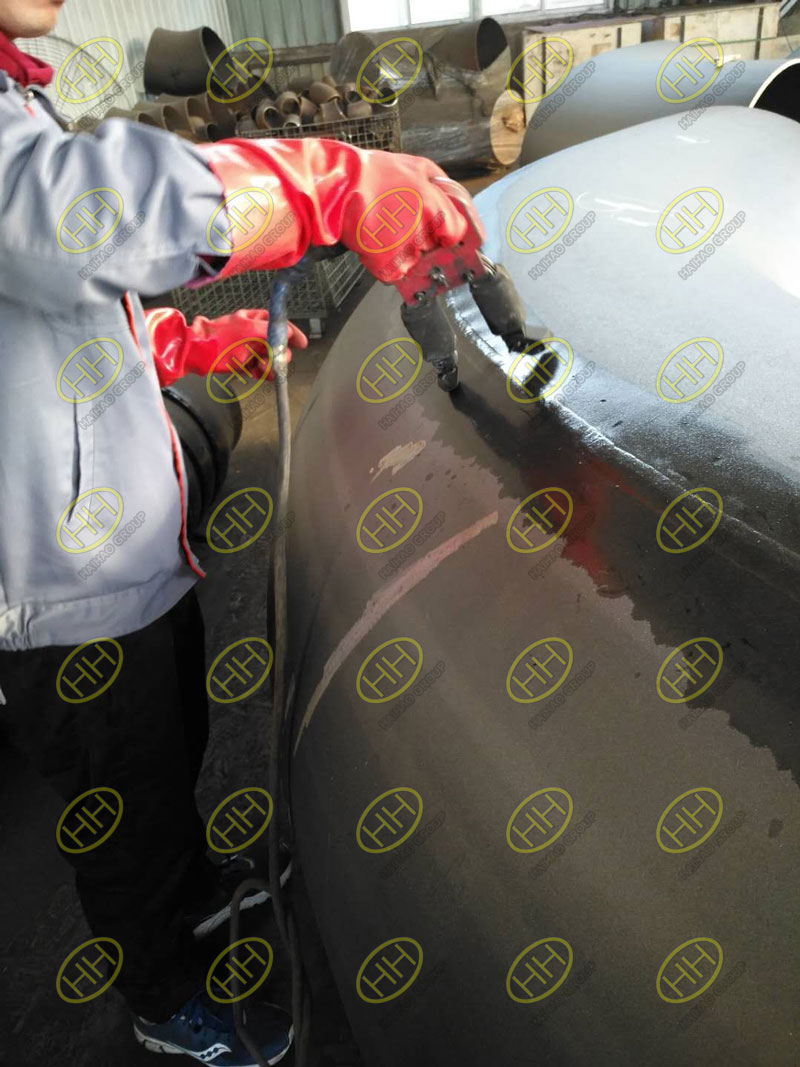What is magnetic particle inspection?
Magnetic particle inspection (often abbreviated MT or MPI) is a nondestructive inspection method that provides detection of linear flaws located at or near the surface of ferromagnetic materials. It is viewed primarily as a surface examination method.
Magnetic particle inspection (MPI) is a very effective method for location of surface breaking and slight sub-surface defects such as cracking, pores, cold lap, lack of sidewall fusion in welds etc in magnetic materials.
There are many different techniques. The most versatile technique is using a 110v AC hand held electromagnetic yoke magnet, a white strippable paint as contrast background and a magnetic “ink” composed of iron powder particles in a liquid carrier base.

Magnetic particle testing for large diameter elbow welds
The area is magnetised with the yoke magnet. In the event of a surface or slightly sub surface defect being present, the lines of magnetic force will deform around the defect.
The magnetic ink is applied and the iron powder particles will bridge the gap caused by the defect and give a visible indication against the white contrast background.
Magnetic particle inspection (MPI) provides very good defect resolution and is used extensively on:
Welded fabrications in magnetic material, Castings, Locating fatigue cracks in items subject to cyclical stress
Schematic of flux lines flowing past both a perpendicular and parallel defect,
and flux leakage occurring around the perpendicular flaw.
MAGNETIC PARTICLE INSPECTION IS PERFORMED IN FOUR STEPS:
- Induce a magnetic field in the specimen
- Apply magnetic particles to the specimen’s surface
- View the surface, looking for particle groupings that are caused by defects
- Demagnetize and clean the specimen
ADVANTAGES OF MAGNETIC PARTICLE INSPECTION
- Can find both surface and near sub-surface defects
- Some inspection formats are extremely portable and low cost
- Rapid inspection with immediate results
- Indications are visible to the inspector directly on the specimen surface
- Can detect defects that have been smeared over
- Can inspect parts with irregular shapes (external splines, crankshafts, connecting rods, etc.)
LIMITATIONS OF MAGNETIC PARTICLE INSPECTION
- The specimen must be ferromagnetic (e.g. steel, cast iron)
- Paint thicker than about 0.005″ must be removed before inspection
- Post cleaning and post demagnetization is often necessary
- Maximum depth sensitivity is typically quoted as 0.100″ (deeper under perfect conditions)
- Alignment between magnetic flux and defect is important
If you want to know more information, please feel free to contact us.Email:sales@haihaogroup.com
